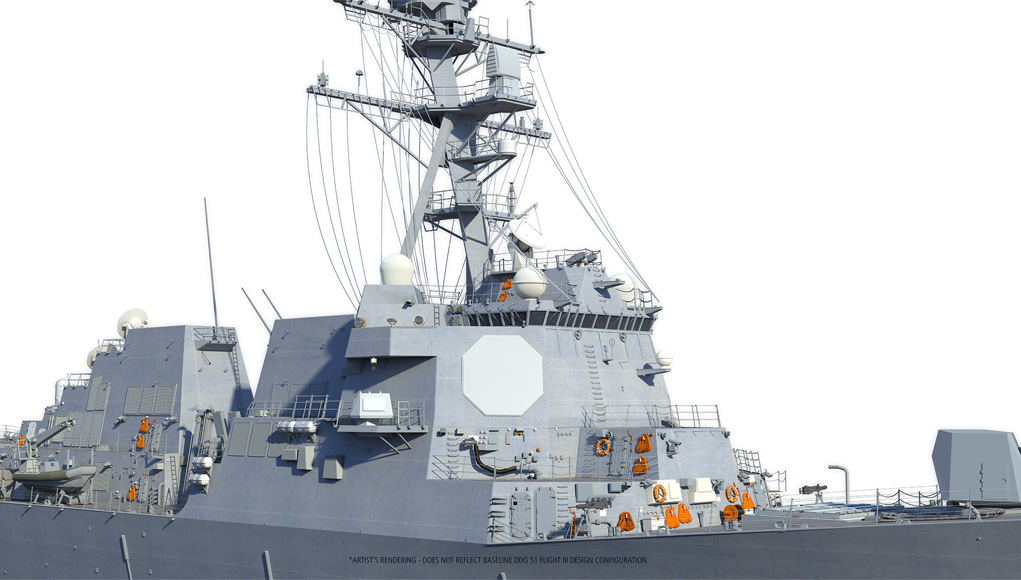
ARLINGTON, Va.— Lockheed Martin’s latest Aegis combat weapon system upgrade – Baseline 10 – will not only be built for the Navy’s upcoming fleet of Flight III Arleigh Burke guided-missile destroyers but also provide the service with backward compatibility for older ships.
The bulk of the Baseline 10 upgrade integrates the new AN/SPY-6(V) radar, Jim Sheridan, the head of Lockheed Martin’s Naval Combatants Group, said during a media briefing at the 2019 Surface Navy Association Symposium. However, Baseline 10 will also work with older systems.
“We’re working to bring the capability to ships that will not require putting SPY-6 radar on older ships,” Sheridan said.
Not all ships will have the Raytheon SPY-6 radars installed, so Lockheed Martin designed Baseline 10 to be compatible older variants AN/SPY-1 radars. Doing so also will help foreign navies opt to upgrade their systems to Baseline 10.
The new version of Aegis follows the introduction of Baseline 9, which allowed ships fielding older AN/SPY-1D(V) radars the capability to both track ballistic missile and traditional air warfare threats. The Baseline 9 architecture is built around commercial servers rather than older Aegis MILSPEC computers allowing for easier upgrades.
The future USS Jack H. Lucas (DDG-125), the first Flight III Arleigh Burke guided-missile destroyer, is being built with Baseline 10 including SPY-6 radar. The Navy expects Baseline 10 initial operational capability during Fiscal Year 2023. Lucas is currently under construction at the Huntington Ingalls Industries’ Ingalls Shipyard in Pascagoula, Miss., and is expected to deliver in 2021 the Navy, according to the company.
The development of Baseline 10 is also indicative of Lockheed Martin’s push to make Aegis interoperable with several ship systems, giving commanders a great choice of ways to address imminent threats.
For example, Sheridan said Lockheed is working to pair its HELIOS directed energy weapon with the Aegis system. The company’s pitch for HELIOS is the system provides commanders another tool to use, especially in situations where firing a missile is not the most effective option, such as neutralizing unmanned aerial vehicles.
Fielding the weapon is still something for the future – the company plans to put HELIOS through a product design review this year. The potential of HELIOS, though, is promising enough for Lockheed Martin officials to consider how to integrate the system into ship designs instead of building something bolted onto a ship.
“It gives us an infinite magazine,” Sheridan said. “You’re never going to go Winchester with HELIOS onboard.”





